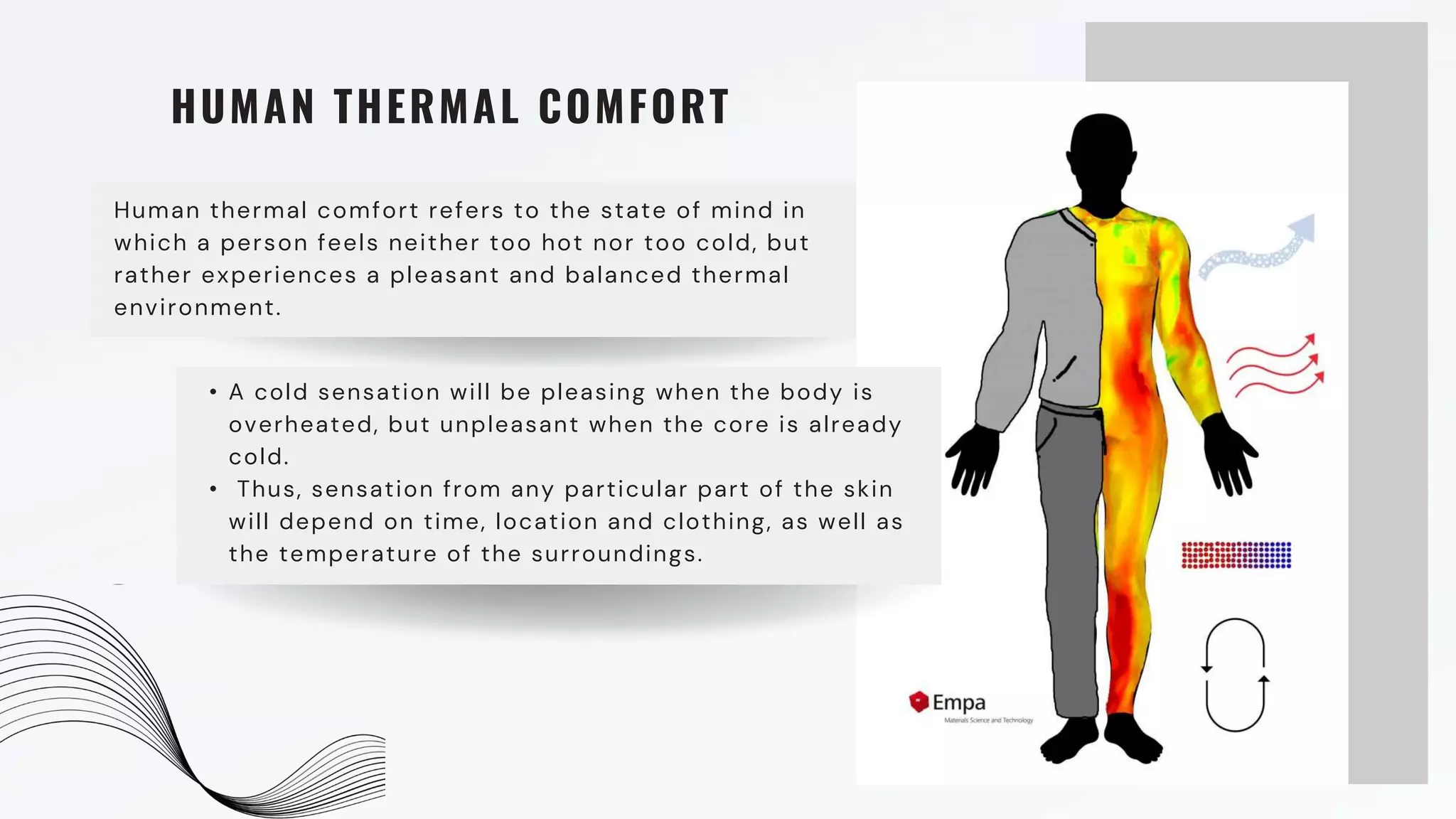This document discusses human thermal comfort and factors that contribute to it. It defines human thermal comfort as a state where a person feels neither too hot nor too cold but experiences a pleasant thermal environment. It identifies six key factors that influence thermal comfort: clothing insulation, humidity, air speed, air temperature, radiant temperature, and metabolic rate. The document then discusses various passive design techniques that can be used to achieve thermal comfort, including designing for the climate, building orientation, natural ventilation, shading, materials selection, landscaping, and use of water bodies.
















